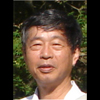|
|
|

Shin AizawaShinichi Aizawa received his Ph.D. from the Tokyo Kyoiku University Department of Zoology in 1973 where he worked on the developmental biochemistry in sea urchin. He spent the period from 1974 to 1979, researching cellular aging, as an investigator at the Tokyo Metropolitan Institute of Gerontology, and then spent another two years as a research fellow at the University of Washington where he started working on chimeric mouse production using embryonic carcinoma cells. He returned to the Tokyo Metropolitan Institute of Gerontology in 1982, where he remained until 1986, when he moved to the RIKEN Tsukuba Life Science Center; in those days, he worked on in vivo oncogenesis with transgenic mice. In 1994, he was appointed professor at the Kumamoto University School of Medicine and served in that position until 2002. Since 2000, he has held concurrent positions as deputy director of the RIKEN CDB, group director of the Laboratory for Vertebrate Body Plan, and the head of the Laboratory for Animal Resources and Genetic Engineering. His current research interests, which stem back to his time at Kumamoto University, are on the mechanisms involved in A-P axis formation, head induction and initial brain regionalization. |
|
![]()
![]()

